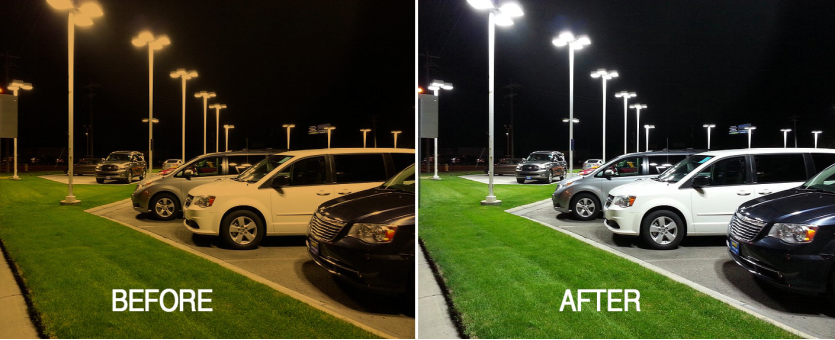In any nighttime parking lot, a tremendously powerful source of light is required. The lighting should serve two purposes; it should provide illumination for the drivers maneuvering their cars onto the lot, and it should also be energy-efficient and reliable. It is this concept that led directly to the creation of LED parking lot lights.
Closely related are the LED floodlights, which are preferred due to their outstanding performance across various locations. For a lighting source to qualify as open parking-worthy, the wattage should be more significant than 1000 watts, and it should also have the ability to produce a green hue which conserves energy and isn’t quite as harmful to the ozone layer and environment. Let’s take a look at high-pressure sodium lamps Vs. LED parking lot lights.
Understanding HPS lamps
In modern lighting endeavors, high-pressure sodium (HPS) lighting sources are widely deployed in public outdoor areas as well as in industrial lighting solutions. Some more areas in which HPS lamps can be found include roadways, high-security zones, and parking lots meant for members of the public.
The reason many buyers still go for HPS lamps is the efficiency of the devices. HPS lamps generate up to 100 lumens for each watt during prime lighting conditions. For some bulbs with wattage higher than 600W, peak efficiencies more significant than 150 lumens per watt can be achieved.
The main challenge that comes with the use of HPS lamps is corrosion. Sodium vapor, when combined with high pressure and high temperatures, is capable of destroying just about any metal surface.
HPS lamps consist of bulbs that contain xenon gas. Xenon is preferred because of its shallow ionization potential compared to many other inert gases. The tubes also include a sizable amount of mercury amalgam. Due to the tiny spaces inside the HPS lamps, starting electrodes cannot fit inside. This means that a larger voltage is needed to jump-start the arc. Ballast combined with an igniter is most suitable for this endeavor. The lights work by generating an arc of electricity that passes through sodium metal in vapor form.
Advantages of LED parking lot lights over HPS lights
- Compared to LED parking lot lighting, HPS possesses a visibly narrower spectrum of color. HPS is currently only capable of producing a yellow hue.
- HPS lighting sources possess horrible CRI among all possible light sources.
- LED parking lights do not require a warm-up period, compared to HPS lights, which need a significant warm-up time frame.
- LED is not prone to flickering. HPS lighting that is near the end of its life is exceptionally prone to flickering.
- HPS lighting is Omni-directional. This leads to significant wastage of light. LED parking lot lights are focused in only one direction, enhancing their effectiveness in lighting up vehicle grounds.
- LEDs do not contain fragile components such as glass bulbs. HPS lighting sources do, making them a hazard in dangerous environments.
Conclusion
LED parking lot lights are an excellent choice for illuminating vehicle grounds, arenas, and public spaces. They do not come with any of the limitations of high-pressure sodium lamps, which are wasteful and contain fragile components.

